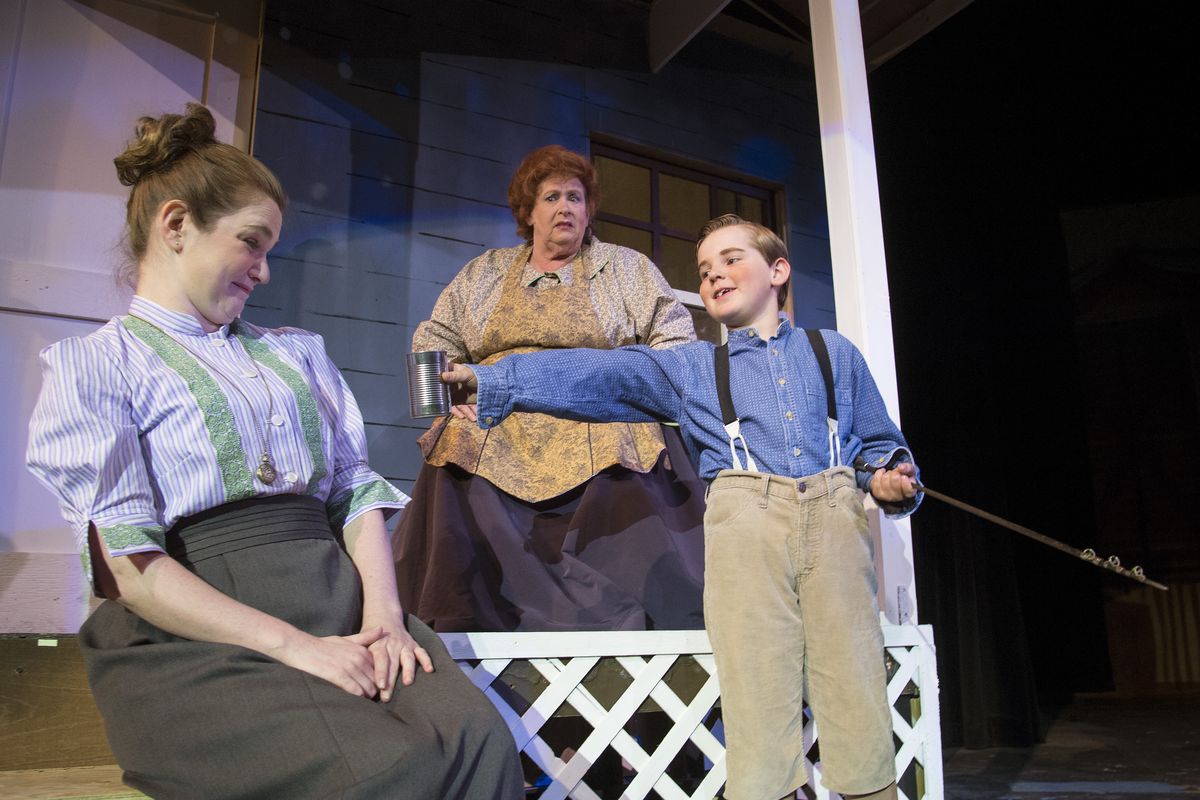Civic revives ‘Music Man’
Director’s take on fan favorite aims to be true to early 20th century rural life

Meredith Willson’s “The Music Man” plays out almost like a greatest hits compilation of great Broadway show tunes: “(Ya Got) Trouble,” “Till There Was You,” “Shipoopi,” “The Wells Fargo Wagon” – they’re all classics.
The show has been revived and adapted countless times since its 1957 debut, and Spokane Civic Theatre closes out its latest season with another take on Willson’s seminal work (Civic last produced it in 2006). It’s an old warhorse that most musical fans know forward and backward, and if it’s going to be successful, it has to have the same big, brassy energy as a band of 76 trombones.
But the Civic’s interpretation certainly isn’t cutting any corners in terms of scope and style. The show’s director, Tia Wooley, is working with a cast of 41 actors, many of whom are 20 years old or younger.
“When we were sitting down trying to plan what to do for choreography, we said, ‘Well, you can’t have a boy’s band without boys, and you can’t have a bunch of dance numbers without partners,’” Wooley said. “We cast what we absolutely needed. I would’ve loved to have cast more, but the costumers probably would have killed me. And they wouldn’t have fit on stage.”
Set at the dawn of the 20th century, “The Music Man” begins as a charlatan named Harold Hill (Mark Pleasant) strides into the sleepy town of River City, Iowa, with a scheme in mind. His plan is to convince the seemingly naïve townspeople that he can teach their children to play instruments and then form a local marching band. River City’s residents aren’t nearly as dim as Hill expects, and his stay is extended further after local librarian Marian Paroo (Alyssa Day) catches his eye.
Wooley said she wasn’t intimately familiar with “The Music Man” before coming on as the director, which required her to immerse herself in the material.
“I’d seen it when I was younger, but I did not know it,” Wooley said. “So I had to do my research on it, which included reading the script and the music multiple times, and then doing research on all those darn words they have that I had no idea what they meant. That took a chunk of time, just to figure that out.”
Authenticity was important to Wooley’s interpretation of the show: While other productions had relied on lavish costumes and sets, she was focused on capturing the feel of a rural community in the early 1900s as accurately as possible.
“All of the times I’ve seen ‘The Music Man,’ they always had a really dressy style and everybody looks so glamorous,” she said. “I wanted it to be realistic for a small Iowa farm town. … I was so picky. They wouldn’t wear this big, long-sleeved, high-necked gown with a shawl in the middle of summer.”
That means that this version of “The Music Man” is a bit grubbier and more fitting with the time period than, say, the 1962 film version, and Wooley said her desire for authenticity extended to her cast.
“(The show) was written in the ’50s about the early 1900s, so even then it was written out of time,” Wooley said. “I had everyone do all of their research on what their characters would have been doing at that time – what were the kids playing, what were the responsibilities, what was the discipline?”
So why does “The Music Man,” which exists in a world so unlike our own, still appeal to modern audiences? Wooley thinks it’s the combination of a classic storyline and memorable, hummable songs.
“It’s the quintessential love story,” she said. “At the very beginning, neither Marion nor Harold really likes each another, but he has a goal, and her goal is to keep him from that goal. It’s the classic boy meets girl and falls in love, and the good wins out in the end. And the music is really catchy. You can’t help but go away singing the music.”